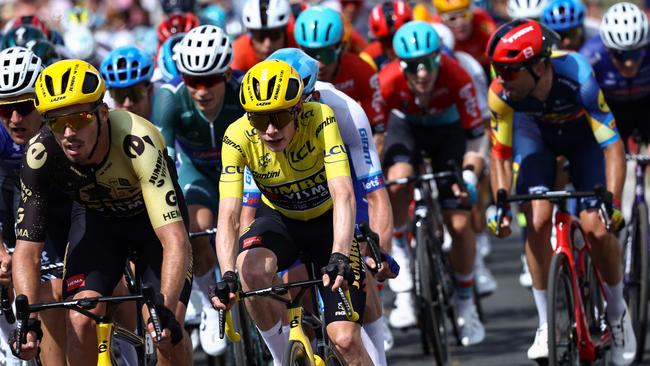‘Hidden’ concussion epidemic sweeping kids sports
Hundreds of concussed Victorians are hospitalised every year, but our most “vulnerable” patients make up a staggering number of cases.

Victoria
Don't miss out on the headlines from Victoria. Followed categories will be added to My News.
Sports-related concussions were responsible for nearly 2900 Victorian emergency department visits in five years, with football linked to one in four cases and youths vastly over-represented.
New data from Monash University’s Victorian Injury Surveillance Unit reveals 10 to 14-year-old patients made up a staggering 39 per cent of cases, followed by 15-19 year-olds (24 per cent) and 5-9 year-olds (13 per cent).
The new figures, covering all Victorian public hospitals from July 2017 to June 2022, come amid increasing community and scientific concern about concussion, spurred by high-profile athlete cases.
But neurologist Dr Rowena Mobbs said some call this a “hidden epidemic” because hospital data under-counts the issue, and young people’s developing brains were more “delicate and vulnerable”.
“Children may also experience a more severe or prolonged concussion syndrome, so extra care should be taken to ensure their full recovery,” the Macquarie University Australian CTE Biobank director said.
Melbourne clinical neuropsychologist and Murdoch Children’s researcher Vanessa Rausa attributed children’s increased risk to lower skill levels and reduced neck strength, but agreed recovery should be tailored to a developing brain.
She said they see patients struggling with headaches, nausea, concentration, mental and emotional health, sleep and memory but most kids recover quickly.
“There is that 30 per cent who have persistent symptoms after a month,” she said.
The state’s hospital system averaged 580 sports-related concussions a year, peaking at 687 in 2020-21 before dropping to the most recent figure of 480 – with about half of patients admitted to the ward.
More than a quarter of patients lost consciousness while men, who have higher sports participation rates, accounted for seven in ten concussions.
While Victoria’s most popular full-contact sport, football, was the lead athletic activity by a significant margin, cycling was responsible for 298 of the 2899 cases.
Soccer was third with 227 injured (8 per cent), followed by 177 basketballers (6 per cent) and unspecified equestrian events in fifth place with 115 or 4 per cent of total cases.

La Trobe University neuroscientist and Australian Sports Brain Bank research manager Alan Pearce said while professional sports were taking action, local clubs had inconsistent concussion policies.
“I know this for a fact because I have parents calling me and saying how do we address this [at our club],” Professor Pearce said.
“Most adults will downplay the injury because we don’t really understand that it’s actually a brain injury.”
He said there was also emerging research that women and girls were at greater risk of concussion, experienced worse symptoms and took longer to recover.
Dr Mobbs said organisations should do more to reduce concussions and chronic traumatic encephalopathy – a brain disorder linked to repeated non-symptomatic head knocks.
“As a parent, one would expect to see a more fulminant response from the codes beyond rule changes and sanctions, into the hard yards of getting resources and funding for CTE.”
Ms Rausa said paediatric concussions could not be eliminated entirely – pointing out non-sports related concussions, often from falls, were more common – and we should focus on best evidence prevention strategies.
“Kids participating in sport is really important for things like physical and mental health as well.”
AFL spokesman Jay Allen said the health and safety of Victoria’s 170,000-plus footy players was their “key priority”, pointing to their 11-step, minimum 12-day concussion recovery and rehabilitation protocol and club education initiatives.
“The AFL has made more than 30 changes to concussion protocols, tribunal guidelines and on-field rules over the past two decades to further protect the head … in accordance with current and evolving science,” he said.




